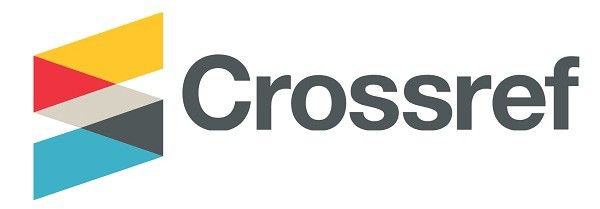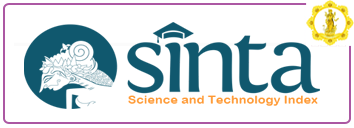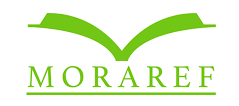PENINGKATAN KEPERCAYAAN DIRI (SELF-EFFICACY) DAN MOTIVASI SISWA MELALUI MODEL DISKUSI DI SMP N 1 MLATI
DOI:
https://doi.org/10.25078/jpm.v9i02.2423Keywords:
Meaningful Learning, Model Discussions, Self-efficacy, MotivationAbstract
This research aims to determine the increased self-efficacy and the learning motivation of students through the application of meaningful discussions using the model.
The research was practiced in the SMP N 1 Mlati. The subject of this study was class VIIB. This type of study is a Class Action Research (PTK) with the assessment cycle model Spiral Kemmis and Taggart are planning, acting and observing, and reflecting. Data collection techniques increase self-efficacy were measured by questionnaires, improved student motivation is measured by questionnaires and observation sheets used to process of increasing self-efficacy and student motivation. Data analysis technique used is descriptive qualitative and quantitative.
The results showed that increasing students’ self-efficacy and students’ motivation, namely (1) Establishing the set: discuss the purpose of discussion and sharing of students in 6 groups, (2) focus the discussion: confirms discussions with the group, the initial question about the problems in about, the problems presented deals with everyday life, focusing a good discussion, (3) control the discussion: facilitated discussion with questions, to guide each group discussion, respond to ideas, firmly beginning to end, write the results of discussions on the board with the obvious; (4) end the discussion: riview, summarizes and concludes the discussion with the students and write on the board, and (5) debriefing: ask the opinion of students about his way discussions, the opportunity to participate, revering others' ideas and difficult discussions. Students have the self-efficacy to achieve success indicators to all students (100%) have a high self-efficacy. Students are motivated to achieve success indicators all students (100%) have a high motivation
Downloads
References
Arends, Richard. (2008). Learning to Teach (Terjemahan). Jakarta: Pustaka Belajar.
Arianto Sam. (2010). Hubungan Percaya Diri dengan Kemampuan Berbicara Siswa. Di akses dari http://sobatbaru.blogspot.com/2010/08/hubungan-percaya-diri-dengan-kemampuan.html. Diakses pada selasa, 15 feb 2011 jam 9.38.
Bleicher, E. Robert. (2004). Revisiting the STEBI-B: Measuring Self-Efficacy in Preservice Elementary Teachers. California State University. Diakses dari http://ret.fsu.edu/Files/Tools/new_stebi-b.pdf . Diakses pada hari minggu 11 Desember 2011 jam 14.25.
Depdiknas. (1996). Pembelajaran Terpadu D-II PGSD dan S-2 Pendidikan Dasar. Jakarta: Depdiknas.
Martinis yamin. (2007). Kiat Membelajarkan Siswa. Jakarta: Gaung Persada Press.
Sadirman. (1987). Interaksi dan Motivasi Belajar Mengajar. Jakarta: PT Raja Grafindo persada.
Saifuddin Azwar. (1996). Efikasi Diri dan Prestasi Belajar Statistika pada Mahasiswa. Jurnal Psikologis. No.1. Hlm, 33-34.
Sugihartono, dkk. (2008). Psikologi Pendidikan. Yogyakarta: Universitas Negeri Yogyakarta Press.
Trianto. (2010). Model Pembelajaran Terpadu. Jakarta: Bumi Aksara.
Utami Munandar. 1992. Mengembangkan Bakat dan Kreativitas Anak Sekolah. Jakarta: Gramedia.









